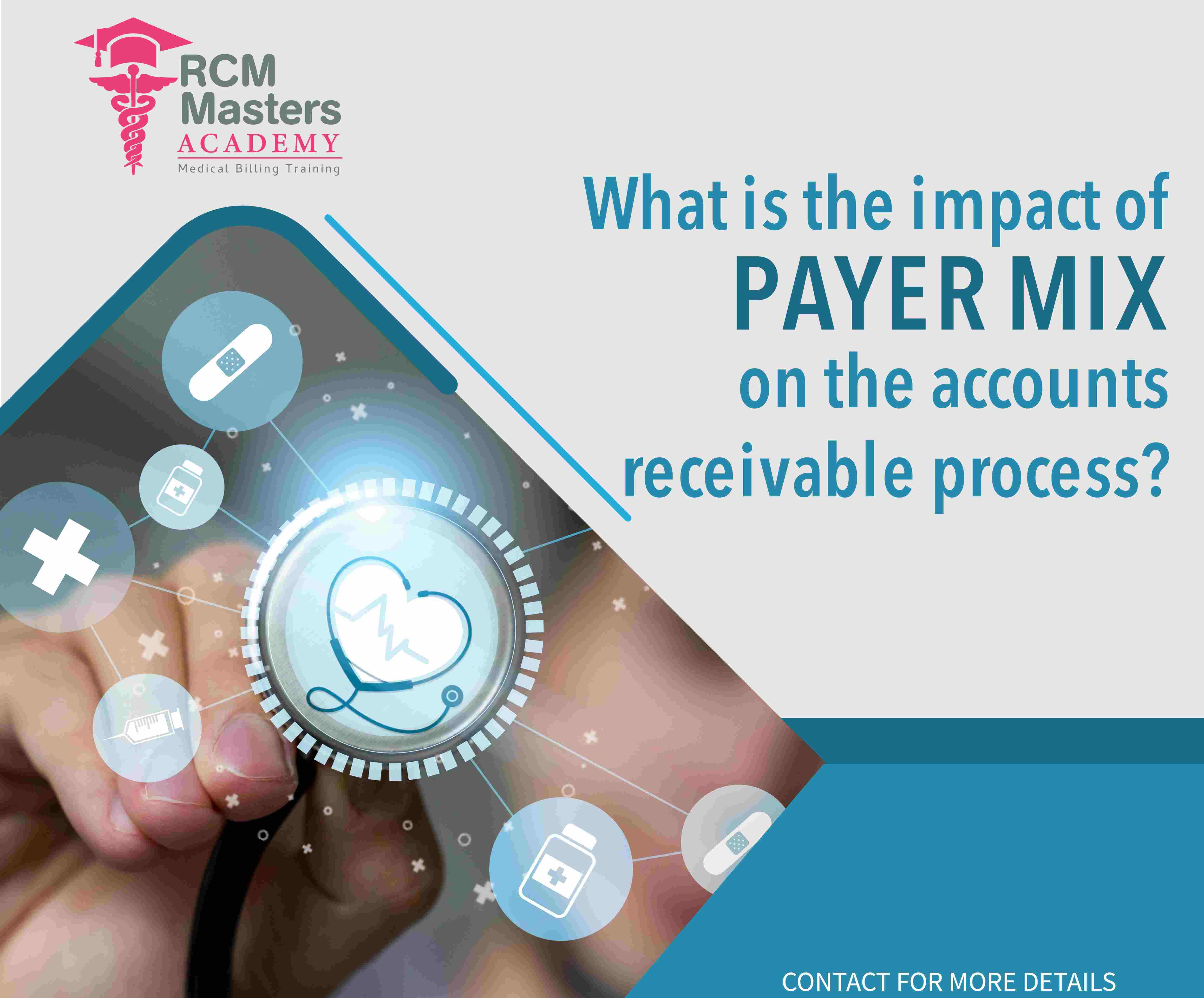 info@rcmmastersacademy.com
info@rcmmastersacademy.com

The payer mix, which refers to the ratio of private insurance, government insurance, and self-pay patients in a healthcare provider's patient population, has a significant impact on the accounts receivable process. Understanding this impact is crucial for healthcare providers to effectively manage their revenue cycle and maximize their financial performance.
One of the primary ways in which payer mix affects the accounts receivable process is through reimbursement rates. Private insurance typically pays healthcare providers at higher rates than government insurance programs like Medicaid and Medicare. Self-pay patients often pay the highest rates but are the most challenging to collect from, as they may not have insurance coverage or may struggle to pay their bills.
This means that providers with a higher percentage of private insurance patients are likely to have higher revenue and lower accounts receivable balances, as compared to providers with a higher percentage of government insurance or self-pay patients. However, providers that primarily serve government insurance or self-pay patients may face significant financial challenges due to lower reimbursement rates and difficulty collecting payment.
Another way in which payer mix affects accounts receivable is through the billing and collection process. Billing and collection practices may differ depending on the type of insurance a patient has. For example, government insurance programs often have strict billing requirements and may take longer to process claims. Private insurance companies, on the other hand, may require less documentation and pay claims more quickly.
This means that healthcare providers with a high percentage of government insurance patients may experience longer payment cycles and more claim denials, leading to higher accounts receivable balances. Providers with a higher percentage of private insurance patients may have a more streamlined billing process and may receive payment more quickly, reducing their accounts receivable balances.
Finally, the payer mix can also affect the types of services that a healthcare provider offers. For example, providers that primarily serve government insurance patients may offer a more limited range of services, as government insurance programs typically have stricter coverage requirements. Private insurance patients, on the other hand, may have access to a wider range of services, as private insurance plans may offer more flexible coverage.
This means that providers with a high percentage of government insurance patients may have a more limited revenue stream, as compared to providers with a high percentage of private insurance patients. This can impact their ability to manage their accounts receivable balances and invest in new technologies and services.
In conclusion, the payer mix has a significant impact on the accounts receivable process for healthcare providers. Understanding this impact is crucial for providers to effectively manage their revenue cycle and maximize their financial performance. Providers with a high percentage of private insurance patients may have lower accounts receivable balances and a more streamlined billing process, while providers with a high percentage of government insurance or self-pay patients may face significant financial challenges due to lower reimbursement rates and difficulty collecting payment. By carefully managing their payer mix, healthcare providers can ensure that they are providing high-quality care while also achieving financial stability and success.
You can enroll for our Online Medical Billing Training here: